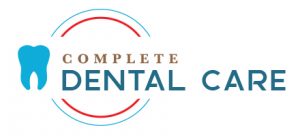Why it is important to hace your teeth cleaned by a professional? Plaque can be removed by brushing, flossing and dental cleanings. Gum disease, which starts with built-up plaque, is a major cause of tooth loss in adults. As gum disease advances, plaque moves further down the tooth where it can destroy the supporting bone in your jaw, causing teeth to loosen and fall out.
Dental cleaning involves the use of tools to remove tartar from your teeth and there are various types that most people have never heard of. Teeth cleanings are necessary, because it helps prevent tooth loss as well as diseases in the rest of the body like heart disease and dementia. (Note that your oral health also affects your overall health)
Plaque and tartar buildup is natural, but, if left untreated, can lead to gum disease. When you have gum disease, your body’s immune system reacts by creating inflamed and bleeding gums. Gum disease can affect the rest of your body if left
untreated, and if you wait too long, then the damage is irreversible. Your teeth and gums do a lot of work for you, so it’s important to treat them well by etting cleanings and checkups every six months. So which types of dental cleaning are offered?
TYPES OF DENTAL CLEANINGS
While general teeth cleanings are necessary for everyone, there are different types of dental cleaning, depending on the health of your gums. Talk to your dentist about the various levels of gum disease and what cleaning is necessary for your current condition.
While general teeth cleanings are necessary for everyone, there are different types of a dental cleaning, depending on the health of your gums. Talk to your dentist about the various levels of gum disease and what cleaning is necessary for your current condition.
Around 80% of people in the U.S. have Type I Gum disease, also known as Gingivitis. Your gums bleed when you floss and may also show some redness surrounding your teeth.
If you have gingivitis, then you will need to floss and brush more frequently. Ask your dentist about other tools that may help in reducing gingivitis.
If your gums are bleeding and your dentist finds deep pockets between your gums and teeth, then you most likely have early periodontitis, Type II gum disease. Another sign of Type II is gum recession, or when gums pull away from the tooth and expose the root of the tooth.
Receding gums are irreversible and cannot be fixed, not even by surgery. Your dentist may recommend a deep cleaning to remove tartar buildup that is no longer removable from regular checkups. Not all of your teeth may need deep cleaning,
but it’s important to treat the affected areas as soon as possible.
After your deep dental cleaning, you will need to attend follow-up appointments with your dentist to clean recurring tartar buildup in the affected areas.
At these stages of gum disease, your gums will no longer espond to treatment, your dentist will require surgery at this
point. Your dentist will recommend multiple deep dental leanings and root planing. For more advanced gum disease, you
may need to speak with a periodontist (gum specialist) to determine the possibility of surgery to remove the affected
areas (teeth and possible gums). After treatment, you must follow through with proper brushing and floss at home, or else all of your dental work will be reversed.

AFTER YOUR TEETH CLEANING
Whether you have gum disease or not, your oral hygiene at home will ultimately determine your treatment plan (and its cost). Outside of your regular checkups, make sure that you:
Make an appointment for every six months for regular checkups, and every three months if you have gum disease
